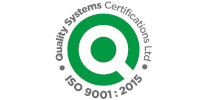Sustainable Water Management: Paving the Way for a Greener Future

As the world grapples with the increasing challenges of climate change and resource scarcity, sustainable water management has emerged as a critical component of building design and urban planning. For BSE|3D, integrating effective water conservation techniques, greywater recycling systems, rainwater harvesting, and sustainable drainage systems (SuDS) forms an essential part of our design process and can significantly enhance environmental sustainability and reduce operational costs.
Water Conservation Techniques
Water conservation is the first step towards sustainable water management. It involves a range of strategies aimed at reducing water consumption and minimising waste. Key techniques include:
Low-Flow Fixtures – Installing low-flow taps, showerheads, and toilets can drastically cut down water usage without compromising on performance. These fixtures use advanced aerators and flow regulators to maintain pressure while using less water.
Leak Detection Systems – Modern leak detection systems can identify and alert building managers to leaks early, preventing water wastage and potential property damage. Smart meters and sensors can provide real-time monitoring and data analytics to optimise water use.
Efficient Landscaping – Incorporating drought-resistant plants and efficient irrigation systems, such as drip irrigation, can reduce outdoor water use. Additionally, using mulch and soil amendments can enhance water retention in the soil.
Behavioural Changes – Educating occupants about water-saving practices, such as turning off taps while brushing teeth or using full loads in dishwashers and washing machines, can significantly contribute to conservation efforts.
Greywater Recycling Systems
Greywater recycling involves reusing wastewater from baths, showers, sinks, and washing machines for non-potable purposes, such as toilet flushing and irrigation. This can reduce the demand on the freshwater supply and decrease wastewater discharge.
Collection and Treatment: Greywater systems collect water from specified sources, filter out contaminants, and treat it to a standard suitable for reuse. Treatment processes can include biological, chemical, and mechanical methods to ensure safety and efficiency.
Distribution: Once treated, greywater can be stored in tanks and distributed via a separate plumbing system to where it is needed. This system can be integrated with smart technology to manage water distribution based on demand and availability.
Benefits: Greywater recycling can reduce freshwater consumption by up to 50%, lower utility bills, and contribute to a building’s sustainability credentials, making it more attractive to environmentally conscious occupants and investors.
Rainwater Harvesting
Rainwater harvesting involves collecting and storing rainwater for later use, which can significantly supplement water supply and reduce reliance on mains water. This system can be especially beneficial in regions with high rainfall.
Collection Systems: Roofs are the most common collection surfaces. Gutters and downpipes channel the rainwater into storage tanks. Filtration systems remove debris and contaminants before storage.
Storage Tanks: These can be above or below ground and should be chosen based on capacity requirements and available space. Modern tanks are designed to prevent algae growth and maintain water quality.
Usage: Harvested rainwater can be used for a variety of non-potable applications such as landscape irrigation, toilet flushing, and even laundry. Advanced systems can also purify rainwater to a potable standard, suitable for drinking and cooking.
Sustainable Drainage Systems (SuDS)
SuDS are designed to manage stormwater runoff in a way that mimics natural processes, reducing the risk of flooding, improving water quality, and enhancing urban green spaces.
Permeable Surfaces: Using permeable materials for pavements and car parks allows rainwater to infiltrate the ground, reducing runoff and recharging groundwater.
Green Roofs and Walls: These structures not only absorb rainwater, reducing runoff, but also provide insulation, improve air quality, and promote biodiversity.
Retention Basins and Swales: These features slow down water flow and allow it to soak into the ground, which helps to prevent flooding and manage water quality by filtering out pollutants.
Detention Ponds and Wetlands: These can store excess stormwater and release it slowly, imitating natural hydrological cycles and providing habitats for wildlife.
For leading building services design companies like BSE|3D , integrating sustainable water management practices is no longer an option but a necessity. By employing water conservation techniques, greywater recycling systems, rainwater harvesting, and sustainable drainage systems, buildings can achieve greater sustainability, reduce costs, and contribute positively to the environment. As regulations tighten and societal expectations shift towards greener practices, leading the way in sustainable water management will set a benchmark for innovation and responsibility in the industry.
Talk to Our Expert Team
If you would like to learn more about the range of services we offer, please get in touch for an informal discussion about your needs and requirements.






